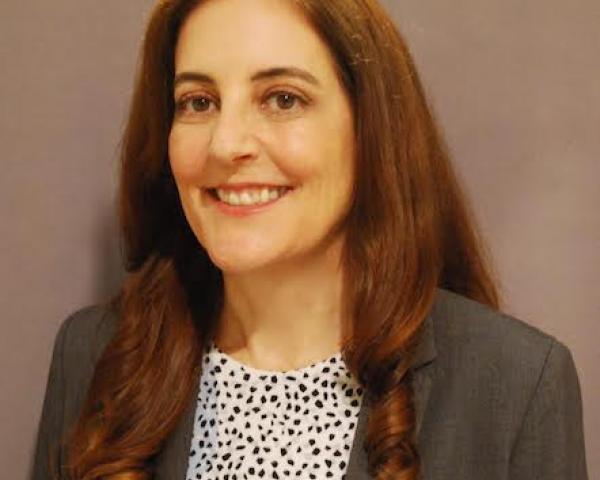We often get called into corporate calamities where “heavy water” is starting to overwhelm the bilge pump of the corporate yacht. Especially in situations like today, where the markets are stuck in bear market territory, where the oil markets have collapsed, where the coronavirus rampages through the U.S. and where gross uncertainty exists regarding our transportation system and supply chain. We have lived through the financial crisis, regulatory messes and, most importantly, situations where organizations have simply lost the faith of the customers and investors.
Often, directors and officer who have to figure out what to do to “save the ship” must at the very same time try to figure out if they have enough directors and officers (“D&O”) liability insurance to weather the storm and protect them from plaintiffs’ lawyers circling the sinking ship.
Nautical allusions aside, figuring out if your D&O insurance is good enough when you are about to enter stormy seas is not ideal. First, there may be no time to tinker with the D&O coverage. Second, and more importantly, if there is a problem with your coverage, or there is not enough of it, many carriers are reluctant to modify policy wording (to potentially “enhance” coverage), or they add limits of liability when a company is having financial difficulty because the carrier is worried about its potential exposure to directors and officers claims (whether they might be lawsuits or regulatory investigations). To many less-forward thinking carriers, doubling down (in some respect, even if it serves to protect their insureds) sometimes makes no sense.
Finally, despite years of heavy claim activity and many large frauds, bankruptcies and regulatory investigations, we often still see the same problems with policies and towers of insurance. Why? We honestly cannot say. Sometimes corporations and their boards do not focus enough on D&O insurance issues because they are frankly too busy with other issues. Sometimes D&O insurance decisions are based not on “substance” issues but on cost issues, which is generally not the right answer for many reasons. Much of the literature dealing with D&O insurance tends not to be broadly disseminated to the folks who need the information most, like corporate directors and officers. Instead, decisions are often left to risk managers and brokers who do not have much experience dealing with D&O issues at troubled companies.
Our goal in this piece is to place front and center the most important issues relating to such issues. This will allow directors and officers to understand what they need to know and what to ask when questioning management on D&O coverage. These are not the only issues that should be addressed when considering the scope and breadth of D&O coverage, but certainly are ones that should be at the top of any director’s and officer’s list. Truth be told, this advice should hold true for all companies and boards, not just troubled ones. The best time to fix D&O issues is when the sailing is smooth, not when the corporate yacht is about to sink.
Will Your Carrier Hang Tough With You When Things Go Bad?
D&O insurance is frequently purchased in a “stack” or a “tower” of insurance, led by a primary carrier and multiple excess carriers. The excess policies are usually written in “follow form” nature. This means, in most cases, they follow the terms and conditions of the primary carrier. For larger companies, there is both a traditional Side A, B and C tower (covering the entity and individuals) and a Side A tower, covering the directors and officers for non-indemnifiable loss.
Because neither insurance policy forms nor D&O carriers are fungible commodities, it is very important to understand who is the company’s primary D&O carrier, what coverage the carrier offers and whether the carrier “pays claims.” In many ways, the primary D&O carrier is like a critical vendor or business partner that the company cannot do without. The primary D&O carrier can sometimes be the most important business partner (and friend) a company and a director or officer can have. The hope is that, when the seas are rough, like in an insolvency or restructuring scenario, the primary carrier will be there to respond to claims and ultimately protect the personal assets of the directors and officers involved – even in times where indemnification or advancement is unavailable or refused by the corporation.
A few points to consider:
1. What is the carrier’s claims handling and claims paying reputation? Is it business-friendly and coverage-friendly, or is the carrier known to try to find “outs” to coverage? Does the carrier have a free-standing claims department, or does it farm out claims to hyper-aggressive coverage counsel? And, if the company has multiple offices overseas, how does the D&O carrier handle cross-border claims or investigations? Through a bit of investigation, one can often learn from others (such as defense counsel or experienced D&O brokers) information that might indicate which way a carrier leans on these important questions. Obviously, the best carrier is one that will hang with the directors and officers even in the worst of times, and will not “run and hide” behind coverage defenses so it does not have to pay.
2. What is the carrier’s underwriting response to questions and potential modifications? What is the carrier’s responsiveness to requests to enhance coverage for the insureds? These questions relate to the prior question. Directors, officers, and companies want a business partner in their primary carrier, not a “silent partner.” Many of the better carriers often will consider (and implement) policy changes even days or weeks before a bankruptcy filing to clarify policy language for the potential benefit of the insureds. Those are the types of carriers that a director or officer wants on his or her side.
3. Do you have enough coverage? This can be the most worrisome aspect to any director or officer caught up in a corporate storm. Unfortunately, this is also an area that is confusing because there are often no clear or “right” answers as to what limits should be purchased.
The most important thing a director or officer can do in this regard is ask many questions of management. For a public company with $2 billion of annual revenue, $30 million of D&O insurance likely does not make sense. Similarly, for companies with substantial debt and perhaps not a lot of cash on hand, a low D&O limit also would not make sense. Very often, an experienced D&O broker can provide benchmarking, showing what D&O insurance is purchased by similarly situated companies. Thus, a company can look to a competitor in its space, or at its size, to determine what type and level of D&O insurance comparable companies have purchased. Finally, many larger companies with public debt or equity exposure can perform “mock” damages analyses to understand what a potential securities claim against them might look like from the perspective of damages and defense costs. The variable here is that the cost of a simultaneous regulatory or criminal investigation, as discussed below, can vastly skew those amounts.
Can a company increase the limits of its D&O coverage midterm, or even after bad news surfaces? This is a common question. The answer is that it depends on the facts and the circumstances of the particular situation. Sometimes the circumstances a company faces are not so dire, and carriers will cooperate with the company’s desire to protect its directors and officers by agreeing to increase the limits of its tower (for a price, of course). Other times, the situation may be so severe that a request to increase limits will be politely declined. The later polite declination proves our point. Directors and officers should ask questions up front regarding coverage amounts. They should not wait until the corporate ship starts to heel over to request higher amounts. By then it might be too late.
See also: What Effective Leaders Do in Tough Times
Coverage for Regulatory and Criminal Investigations
Troubled companies often encounter a regulatory or criminal investigation (SEC/DOJ) at the same time they are facing civil litigation. This is the potential “double whammy” of defense costs, which often can run into the millions of dollars. Thus, directors and officers need to know what sort of coverage their D&O insurance provides for such investigations because, to the extent such investigation constitutes covered loss under the D&O policy, every dollar spent on investigations will generally reduce the overall limits available to ultimately settle the underlying litigation.
The rules of the road are well established in this area. Directors and officers are generally covered under the company’s directors and officers insurance for formal regulatory and criminal investigations and inquiries as well as “a formal criminal, administrative, or regulatory investigation against an Insured Person when such Insured Person receives a Wells Notice or target letter in connection with such investigations.”
Corporations are generally not covered for their involvement in such situations, unless individual directors or officers are also simultaneously named in the investigation (these rules of the road are often different in the private equity space, which is beyond the scope of this article). Specialized policies in the D&O marketplace exist to cover regulatory and criminal investigations in those situations where only the company is named, though those policies are reported to be expensive. All other things being equal, a director or officer should ensure that he or she is covered for regulatory and criminal investigations and inquiries. These can be very expensive to litigate and defend, and the last thing the company and its board needs at the time is a loose cannon on deck.
Why Does the Insured Versus Insured Clause (and Its Carve-outs) Really Matter?
The insured versus insured clause has been included in D&O policies for a long time. It finds its genesis in a carrier’s need to guard against collusive lawsuits brought by one insured (say, for instance, the company) against another insured (like a director or officer), solely designed to get to the proceeds of the company’s D&O policy.
Indeed, carriers may have valid reasons for not wanting to cover these types of lawsuits. But there are other types of potential “insured versus insured” lawsuits that should be covered (and thus “carved out” of the insured versus insured exclusion) because they generally would not be collusive (and normally are just as hotly contested as suits brought by traditional third parties). Here is a list of certain types of lawsuits that we believe should be explicitly covered under the D&O policy (i.e., carved out) to protect the interests of the directors and officers.
1. Shareholder derivative actions
2. Suits that generally arise in bankruptcy when bankruptcy-formed constituencies, such as creditors’ committees, bondholder committees or equity committees, bring an action derivatively on behalf of a bankrupt company for alleged breaches of fiduciary duty by the company’s directors and officers.
3. Similarly, suits by trustees, liquidators and receivers against directors and officers. As we have seen from high-profile suits involving companies like Tribune, Extended Stay and BearingPoint, bankruptcy-formed constituencies and trustees have become much more aggressive and litigious over the years, and the threat of such suits simply cannot be ignored.
4. Whistleblower suits brought under the provisions of either Sarbanes-Oxley or Dodd-Frank.
What is Non-Rescindable Side A Coverage?
There are two general coverage sides to a D&O policy (leaving for another day the concept of outside director coverage). Coverage “Side A” is for non-indemnifiable loss, meaning loss for which a company cannot indemnify or is financially unable to indemnify. Under this side, the directors and officers are the insureds. Coverage “Side B,” on the other hand, is for indemnifiable loss. Under Coverage C, the company is insured for securities claims.
Side A covers a range of different scenarios. For example, under Delaware law (where many corporations are incorporated), a company cannot indemnify its directors and officers for the settlement of a shareholder derivative action. And in bankruptcy, a company often will be unable to advance defense costs and to indemnify its directors and officers for claims. Indemnification claims by directors and officers against the company may be treated as unsecured claims that get pennies on the dollar, or may even be subordinated in certain circumstances.
As several of the noteworthy “financial fraud”-related bankruptcies have taught us, having “non-rescindable” Side A coverage is very important. “Non-rescindable” Side A coverage means what it says. Even in cases where a carrier may challenge as false statements made by a potentially complicit CEO or CFO in the company’s insurance application for D&O coverage (attaching to such application, for example, financial statements that later need to be restated), non-rescindable Side A coverage generally cannot be rescinded for any reason, which should allow the directors and officers to sleep better at night. Directors and officers should know that non-rescindable Side A coverage is generally standard in today’s D&O marketplace, and thus primary policies that do not have such coverage should be immediately updated.
What is Side A Excess Difference in Conditions Coverage (and Why Is It So Important)?
As noted above, having non-rescindable Side A D&O coverage is critically important. Having “Side A Excess Difference in Conditions” D&O coverage can be even more important. Why? This coverage reacts in two different, wonderful ways to protect directors and senior management.
First, it acts as “excess” Side A D&O insurance, meaning, in English, that it sits above the company’s traditional tower of insurance and will pay Side A non-indemnifiable claims when the traditional tower is exhausted by either traditional indemnifiable claims or non-indemnifiable claims. For example, a company may have $50 million in traditional D&O coverage and $25 million of Side A excess difference on conditions coverage, where $45 million of that insurance has already been exhausted by the settlement of a simultaneously commenced securities class action and SEC investigation. In such a case, the directors and officers would still have $30 million of Side A insurance to deal with, for example, the settlement of shareholder derivative action.
Second, most Side A excess difference in conditions D&O insurance has something called a “drop down” feature, meaning that if, for example, an underlying excess carrier refused to pay its limit of insurance for some coverage-related reason, the Side A excess difference in condition carrier might have the contractual obligation to “drop down” and fill that layer. Thus, it is a critically important feature that potentially will help fill potential gaps in coverage. Also, note that most Side A excess difference in conditions policies have very few exclusions (e.g., most do not have an insured versus insured exclusion), so they can be particularly helpful to directors and officers.
See also: COVID-19: Moral Imperative for the Insurance Industry
Does My Corporation Have Enough Side A Coverage?
In the olden days of D&O (meaning 10 years ago), it was pretty rare to have a large Side A tower of insurance. Companies may have had a large primary tower of insurance, but Side A towers over $100 million were a rarity.
Since the settlement of several large financial crisis cases, we have seen a steady rise in the settlement values of shareholder derivative actions. However, in the last three years alone, the value of these cases has skyrocketed in nine-figure territory on a regular basis. Why? Reasons vary from severity, to regulatory fines and penalties, to the opioid crisis to enormous cybersecurity breaches. One of the major factors in all tends to be a really bad event that caused both a stock-price plunge, along with a large fine or penalty. The resulting litigation is called event-driven.
Event-driven litigation puts pressure on the primary tower of insurance, which quickly gets exhausted, and puts an equal amount of pressure on the Side A tower, which will need to respond to the shareholder derivative action. We would strongly recommend that companies entering troubled water re-evaluate their Side A coverage before the bad event happens. Afterward, it may be way too late.
What is the Priority of Payments Clause, and Why Is It Important?
A priority of payments clause specifies how a carrier should handle competing claims on a policy’s proceeds. For example, most such clauses (some carriers call them “order of payments” clauses) specify that Side A claims get paid first, and then traditional Side B company reimbursement and indemnity claims get paid. Obviously, this approach is tremendously important to directors and officers who may need to defend themselves in securities class actions or bankruptcy-related or inspired litigation.
Some priority of payments clauses give the right to the company or a company officer (like a CEO or CFO) to “withhold” or “delay” payments made under Side B of a D&O policy until those payments are properly designated by the appropriate party. This type of discretion is potentially not a good thing. Why? Giving such potential discretion to the company or a company officer to withhold or direct payments under Side B of a D&O policy might be creatively viewed by some as giving the debtor in bankruptcy “a say” or “control” over the proceeds of the D&O policy. That situation could be used by a creditor or other bankruptcy constituency to control or delay payments to the directors and officers under Side A of the policy, again potentially leaving them without resources to pay their counsel. Varriers are very able to make policy reimbursement calls in bankruptcy settings, and the order of payments under a D&O policy should be left to them, not others.
Making a Better D&O “Mousetrap”
Admittedly, some of the above items are a bit difficult to understand conceptually for the non-insurance professional, and, admittedly, directors and officers often have more pressing issues to deal with when trying to help their companies navigate through troubled waters. But, as we have seen time and time again in our practice, very often D&O insurance becomes the lifeline for directors and officers when companies face trouble.
How can a director or officer stay on top of these issues in the most efficient manner possible? Here are a few suggestions:
- Ask the right questions to the right people, like the company’s risk manager, CFO or general counsel, as to what is covered and what is not, and ask about the above limits of liability issues to make sure you are comfortable that at least these points are properly covered. Again, common sense often prevails here, and, if a director or officer does not like the answers he or she is getting, then corrective action should be demanded before it is too late to act.
- Make D&O insurance issues a board topic at least twice a year so that board members can stay abreast of coverage developments, options and modifications.
- Make sure management sends out the company’s D&O program and tower of insurance at least once a year for a “tune-up.” In this area, coverage options often change, and better coverage can often be obtained so long as the right diagnosis is made by qualified persons such as an experienced D&O broker or, sometimes, experienced outside counsel.






















